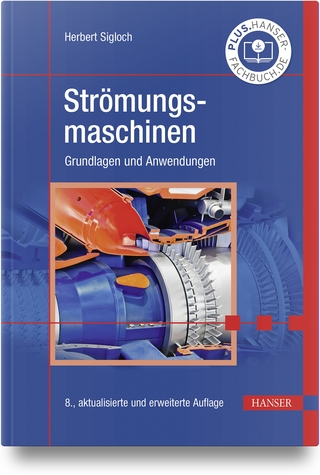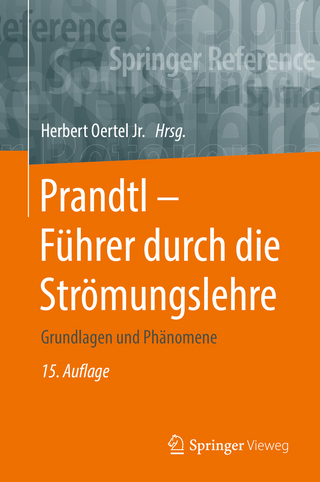
Numerical Analysis of Internal Rotating Turbulent Flows
Seiten
2018
Dr. Hut (Verlag)
978-3-8439-3531-9 (ISBN)
Dr. Hut (Verlag)
978-3-8439-3531-9 (ISBN)
- Keine Verlagsinformationen verfügbar
- Artikel merken
In this thesis, the internal flows in two turbomachinery applications, i.e., an axial fan and a one-stage axial-flow turbine are investigated using a fully conservative cut-cell approach. The finite-volume based flow solver with a sharp representation of the complex moving boundaries embedded into the computational domain, which is used to solve the compressible Navier-Stokes equations, ensures a strict conservation of mass, momentum, and energy. An efficient, parallelized numerical methodology based on unstructured hierarchical Cartesian grids, which allows the simulation and analysis of intricate flow field problems with stationary or multiple relatively rotating complex geometries in a single frame of reference is introduced.
The accurate solution of the turbulent flow fields is pursued with large-eddy simulation (LES), which requires a high mesh resolution to resolve the major part of the turbulence energy spectrum. Furthermore, the accurate prediction of the turbulent flow fields requires the resolution of non-simplified complex geometries in the flow domain. The goal is to use only a minimum amount of modeling for the physical processes involved. Codes used in industry mainly rely on computationally efficient solutions of the Reynolds averaged Navier-Stokes equations (RANS), which, however, only provide solutions that are time averaged over all turbulent scales. However, highly resolved large-eddy simulation (LES) can be used to accurately predict the flow field. Furthermore, LES allows the determination of flow spectra and two-point correlations, which is not possible with RANS. Additionally, the details of the turbulent flow field determined by the LES allow a thorough analysis of the physical mechanisms and therefore provide valuable information for design modifications.
For the axial fan, the focus lies on the analysis of the flow phenomena inside radial tip-gap between the blade and the outer casing wall, which have a strong impact on the efficiency and noise emission. For the second application, i.e., the one-stage axial-flow turbine, the main focus is on a detailed analysis and the improvement of the understanding of the intricate unsteady physical flow phenomena and mechanisms inside the wheel space between the stator and the rotor disks.
The accurate solution of the turbulent flow fields is pursued with large-eddy simulation (LES), which requires a high mesh resolution to resolve the major part of the turbulence energy spectrum. Furthermore, the accurate prediction of the turbulent flow fields requires the resolution of non-simplified complex geometries in the flow domain. The goal is to use only a minimum amount of modeling for the physical processes involved. Codes used in industry mainly rely on computationally efficient solutions of the Reynolds averaged Navier-Stokes equations (RANS), which, however, only provide solutions that are time averaged over all turbulent scales. However, highly resolved large-eddy simulation (LES) can be used to accurately predict the flow field. Furthermore, LES allows the determination of flow spectra and two-point correlations, which is not possible with RANS. Additionally, the details of the turbulent flow field determined by the LES allow a thorough analysis of the physical mechanisms and therefore provide valuable information for design modifications.
For the axial fan, the focus lies on the analysis of the flow phenomena inside radial tip-gap between the blade and the outer casing wall, which have a strong impact on the efficiency and noise emission. For the second application, i.e., the one-stage axial-flow turbine, the main focus is on a detailed analysis and the improvement of the understanding of the intricate unsteady physical flow phenomena and mechanisms inside the wheel space between the stator and the rotor disks.
| Erscheinungsdatum | 03.04.2018 |
|---|---|
| Reihe/Serie | Strömungsmechanik |
| Verlagsort | München |
| Sprache | englisch |
| Maße | 148 x 210 mm |
| Gewicht | 188 g |
| Themenwelt | Naturwissenschaften ► Physik / Astronomie ► Strömungsmechanik |
| Technik | |
| Schlagworte | Large Eddy Simulation • Turbomachinery flow • Turbulent flow |
| ISBN-10 | 3-8439-3531-9 / 3843935319 |
| ISBN-13 | 978-3-8439-3531-9 / 9783843935319 |
| Zustand | Neuware |
| Haben Sie eine Frage zum Produkt? |
Mehr entdecken
aus dem Bereich
aus dem Bereich


